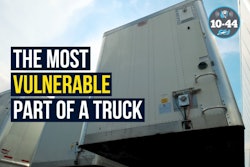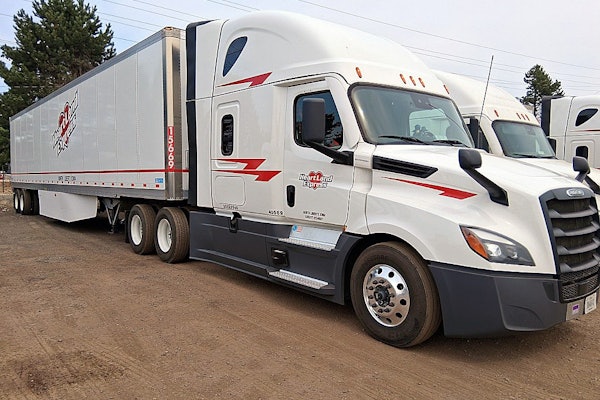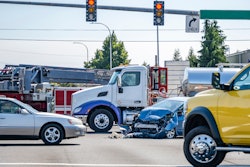Cybersecurity is no longer just a concern for the largest carriers—mid-sized fleets are increasingly finding themselves in the crosshairs of cybercriminals. That’s why the National Motor Freight Traffic Association (NMFTA) ™ has released its latest Cybersecurity Guidebook for Mid-Sized Fleet, expanding its Roadmap to Resilience initiative to support fleets with up to 3,000 assets.
Like NMFTA’s previous guidebooks for owner-operators and small fleets, this new resource offers practical, easy-to-follow steps. But what sets this version apart is the depth of coverage: it walks fleet operators through core cybersecurity best practices and then builds on that foundation with more advanced technical and operational controls.
Once this foundation is covered, additional layers of technical and operational controls are introduced to bring the overall resilience of the organization to an advanced level and to prepare them to consistently and effectively address the ever-changing threat landscape present in the trucking industry.
The guidebook emphasizes starting with the basics—strong passwords, access management, and regular software updates—before introducing scalable strategies to help fleets respond to today’s fast-evolving threats. It’s all about boosting resilience and creating a proactive security culture tailored to the unique challenges faced by mid-sized trucking operations.
For fleets that don’t have full-time IT security staff, this guidebook offers a clear and actionable roadmap to help them stay ahead of cyber risks—and stay on the road.
To view all guidebooks in this series, click here.
To support this guidebook, NMFTA hosted its latest cybersecurity webinar on this subject which featured Artie Crawford, director of cybersecurity and Ben Wilkens, cybersecurity principal engineer for NMFTA, as well as Robert Gray, director of information assurance for AAA Cooper Transport. The group talked through the concepts and controls addressed by this guidebook.
If you missed it, the on-demand version is worth a watch—full of practical tips on how to launch and scale a security program rooted in real-world trucking experience. Access the recording here.
We also just wrapped up our call for abstracts for the 2025 NMFTA Cybersecurity Conference—thank you to everyone who submitted! We were humbled and thrilled by the level of interest we received this year, and we’re looking forward to sharing the speaker lineup and session topics soon. Be sure to sign up for updates at www.nmftacyber.com—this event is expected to sell out fast.
Looking ahead, the NMFTA’s Cybersecurity team will be shifting gears to take a deep dive into the intersection of cybersecurity and cargo crime in the trucking and logistics industry. As incidents like fraudulent pick-ups, and illegitimate double-brokering scams rise, we’re launching a new research initiative focused on how cyber protections can help prevent cargo theft. The prevention guide will first focus on defining the role that cybersecurity plays in reducing an organization's risk from cyber-enabled cargo crime as well as the intersections between cybersecurity, operational security and physical security specific to the transportation sector.
Everyone in the transportation sector—from carriers to drivers, to brokers and third-party logistics providers (3PLs)—wants to stop cargo theft, but it’s not as straightforward as preventing a bad actor from unloading freight off of the back of a truck. The NMFTA cybersecurity team will be digging into the complex relationships between the multiple business units within and between trucking and logistics organizations, between private industry and the various law enforcement agencies involved in responding to and investigating cargo crime, and the various local, state, and federal jurisdictions that become involved due to the widespread geographic areas often covered by a single cargo theft event. If this isn’t enough, the various local, state and federal prosecutors all maintain their own thresholds when it comes to which cases are “worth prosecuting.”
Once the scope of the issue and complex nature of the relationships and entities involved in preventing, investigating and prosecuting cargo crimes have been defined and researched thoroughly, the Guide will provide clear, concise guidance for controls that organizations can implement to directly address the costly threat of cargo crime facilitated by cybersecurity gaps in their operation.
Throughout this project, the NMFTA cybersecurity team will be conducting webinars, research papers, and articles sharing their findings. The team will be working across the industry and with multiple law enforcement agencies to establish a comprehensive body of research, resources, and relationships that will enable organizations to more effectively prevent, report, and investigate cargo crime.
We look forward to sharing this work with our industry peers in the coming months.
Overwhelmed by ensuring your operations are cybersecure? Talk with like-minded peers at the trucking industry’s only cybersecurity conference: NMFTA Cybersecurity Conference, set Oct. 26-28 in Austin, Texas.
Access our free resources and learn more about the cybersecurity conference by visiting www.nmfta.org/cybersecurity.













